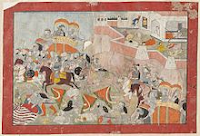LESSER KNOWN IMPACTS OF BRITISH COLONIAL RULE IN INDIA

LESSER KNOWN IMPACTS OF BRITISH COLONIAL RULE IN INDIA BEYOND ATROCITIES: The subtle exploitation and the unseen shadows of British colonial rule in India The British colonial rule in India, lasting from 1858 to 1947, is marked by numerous well-documented atrocities, but there are lesser-known aspects of their exploitation and control that aren't always highlighted in mainstream narratives. 1. Psychological Warfare and Manipulation British officials employed sophisticated psychological tactics to undermine Indian resistance. This included spreading rumours to create distrust among Indian communities, fostering divisions based on religion, caste, and ethnicity, and using propaganda to present British rule as benevolent and progressive. This psychological manipulation made it difficult for a unified resistance to form against the British. 2. Cultural and Intellectual Suppression The British systematically dismantled India's educational institutions and cultural her...





